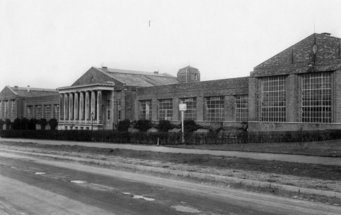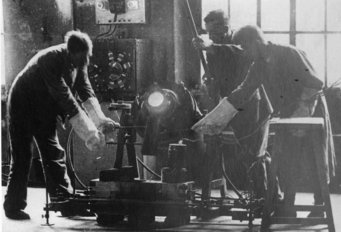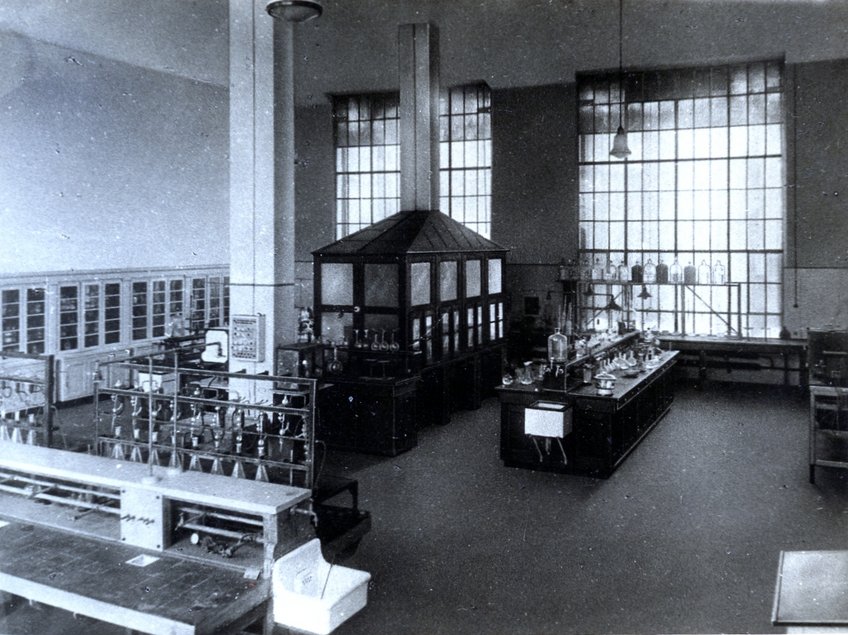
02: The Initial Years of the Kaiser-Wilhelm-Institut für Eisenforschung
After the representatives of the Verein Deutscher Eisenhüttenleute (VDEh) (Association of German Steel Manufacturers), the Kaiser-Wilhelm-Gesellschaft (KWG) and the Prussian Ministry of Education had made the decision to establish a joint research institution for metallurgy under the umbrella of the KWG, it was determined that there should be a board of trustees made up of seven members which would oversee the budget and the activities as well as the research results of the institute.
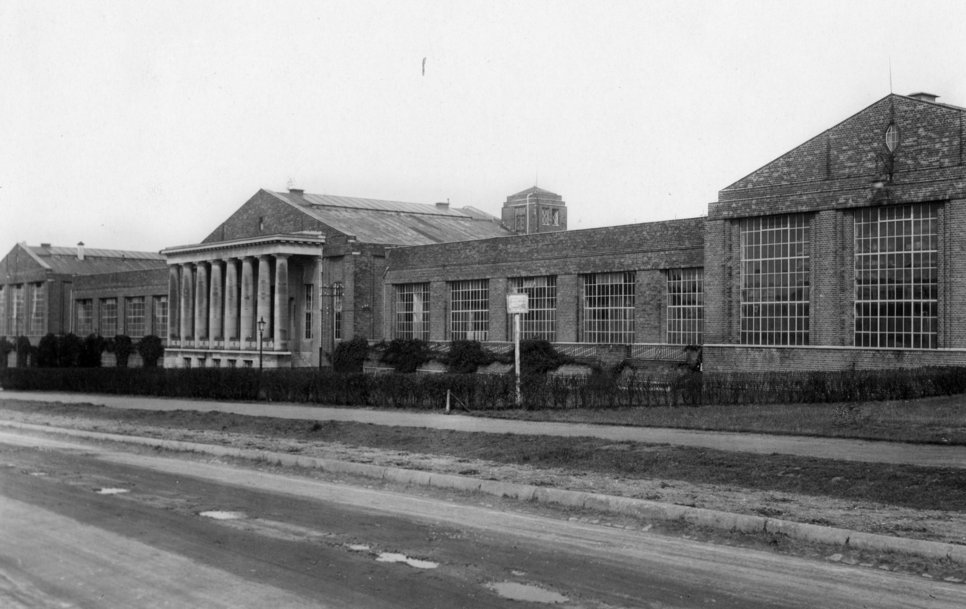
As principal funder, VDEh had a majority in this board. In addition, a scientific advisory board was created which, together with the industry, aimed to co-ordinate the work of the institute regarding its research orientation.[1]
VDEh became the main sponsor of the Kaiser-Wilhelm-Institut für Eisenforschung (KWIE) and financed the institute via a contribution by the steel companies which was coupled to the volume of steel production. Both KWG and the Prussian Ministry of Education only contributed a relatively small share of the costs. Due to this constellation the VDEh was able to determine Düsseldorf, the „desk of the Ruhr area“[2], as a location for the KWIE. The draft of an agreement between VDEh and the city of Düsseldorf in 1919 stipulated that the latter was to provide not only a suitable site but also a contribution to building costs.[3] In the end, an agreement between VDEh and the city of Düsseldorf was concluded on 27th April 1920. The city agreed to not only provide the ground for the construction of the institute but also to contribute an operating subsidy amounting to 70,000 Reichsmarks annually for a period of ten years.[4]
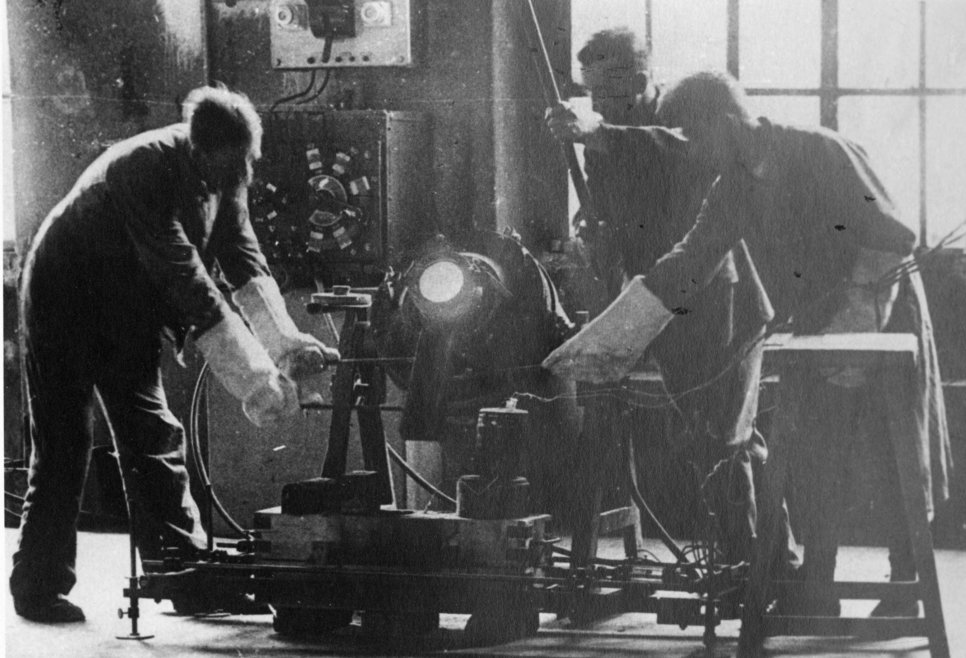
In November 1917 the members of the board of trustees voted for Friedrich Springorum to become their first chairman. The KWIE articles were adopted during the same month and Professor Dr. Fritz Wüst, the head of the Eisenhüttenmännisches Institut der Technischen Hochschule (TH) Aachen, was appointed to be the first managing director of the KWIE.[5]
However, since Professor Wüst was at that time largely occupied with work for the army command under the auspices of the Kaiser-Wilhelm-Gesellschaft für Kriegstechnische Wissenschaft (KWKW), (Kaiser Wilhelm Society for Defence Technologies), no structural or organisational measures were initially carried out on behalf of the KWIE. Immediately after the end of World War I, economic problems prevented the construction of the institute’s building. In 1918, therefore, the institute initially found accommodation at Professor Wüst's Eisenhüttenmännisches Institut at the Technologische Hochschule (University of Technology) Aachen and started its work with only one research assistant and one technical assistant. Beginning in December, 1920, however, the institute found temporary accommodation at an industrial hall of the Rheinische Metallwaren- und Maschinenfabrik in Düsseldorf, later renamed Rheinmetall AG, and it was now able to increase its headcount to 14, including six scientists.[6]
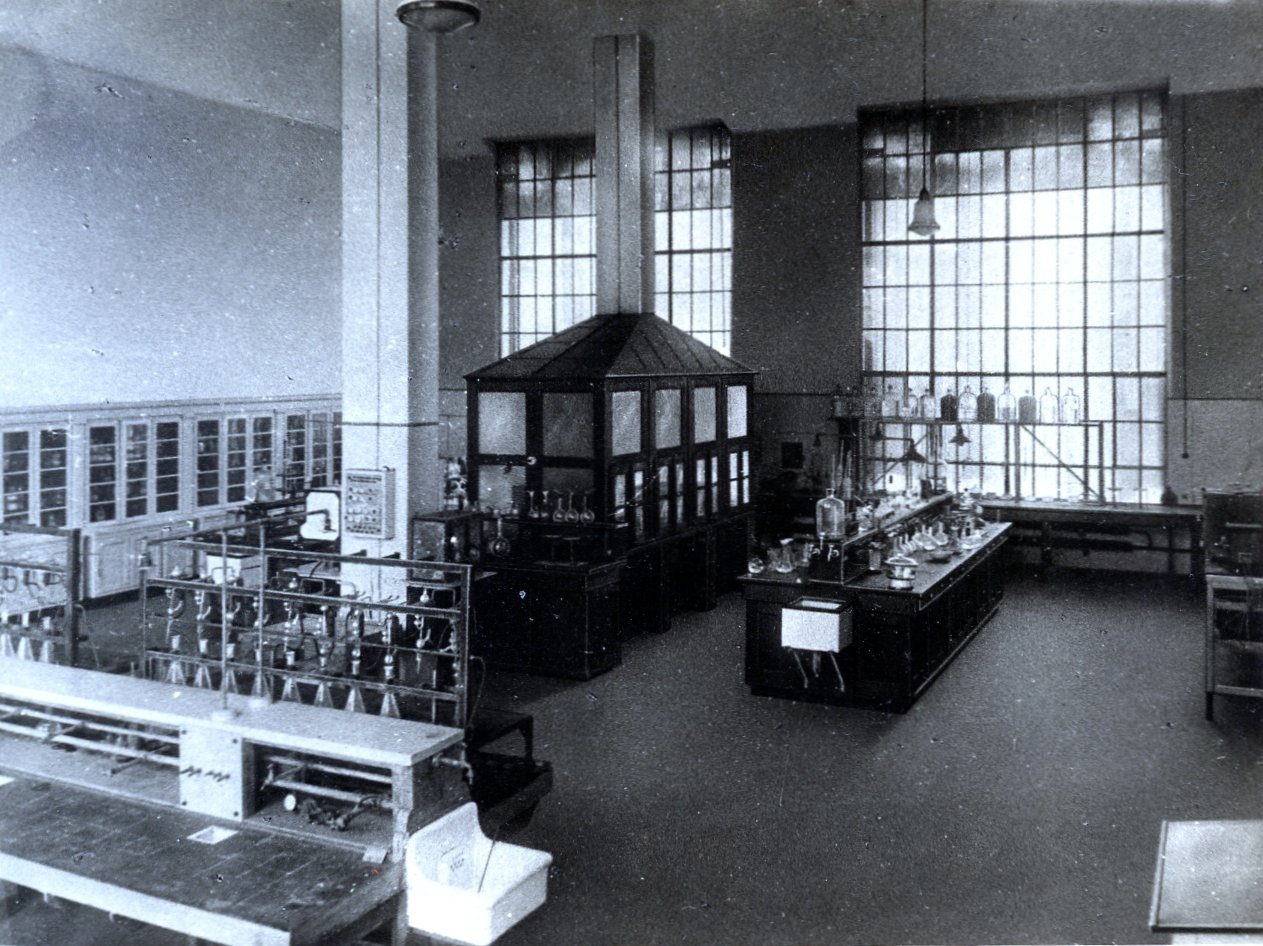
[1] cf. Dönges, Wilhelm: Geschichte und Entwicklung des Kaiser-Wilhelm-Instituts für Eisenforschung zu Düsseldorf, in: Mitteilungen aus dem Kaiser-Wilhelm-Institut für Eisenforschung zu Düsseldorf, vol. XXV, Düsseldorf 1942, p. 8 f. and Flachowsky, Sören: „Alle Arbeit des Instituts dient mit leidenschaftlicher Hingabe der deutschen Rüstung“. Das Kaiser-Wilhelm-Institut für Eisenforschung als interinstitutionelle Schnittstelle kriegsrelevanter Wissensproduktion 1917-1945, in: Maier, Helmut: Gemeinschaftsforschung, Bevollmächtigte und der Wissenstransfer: die Rolle der Kaiser-Wilhelm-Gesellschaft im System kriegsrelevanter Forschung des Nationalsozialismus, Göttingen 2007, pp. 153-214, p. 159 f.
[2] In colloquial speech Düsseldorf was frequently called „desk of the Ruhr area“ because the headquarters of many iron and steel producing companies were located there as well the offices of their association: https://de.wikipedia.org/wiki/Schreibtisch_des_Ruhrgebiets (19.01.2017)
[3] Flachowsky: „Alle Arbeit des Instituts …“, p. 160.
[4] Files of the city of Düsseldorf concerning the Eisenforschungsinstitut, Stadtarchiv Düsseldorf, 0-1-4-34559.0000, principal contract between the city of Düsseldorf and Verein Deutscher Eisenhüttenleute (VDEh) dated 27th April, 1920.
[5] Dönges: Geschichte und Entwicklung, p. 9.
[6] cf. Flachowsky: „Alle Arbeit des Instituts …“, p. 160 and Dönges: Geschichte und Entwicklung, p. 9 f.
